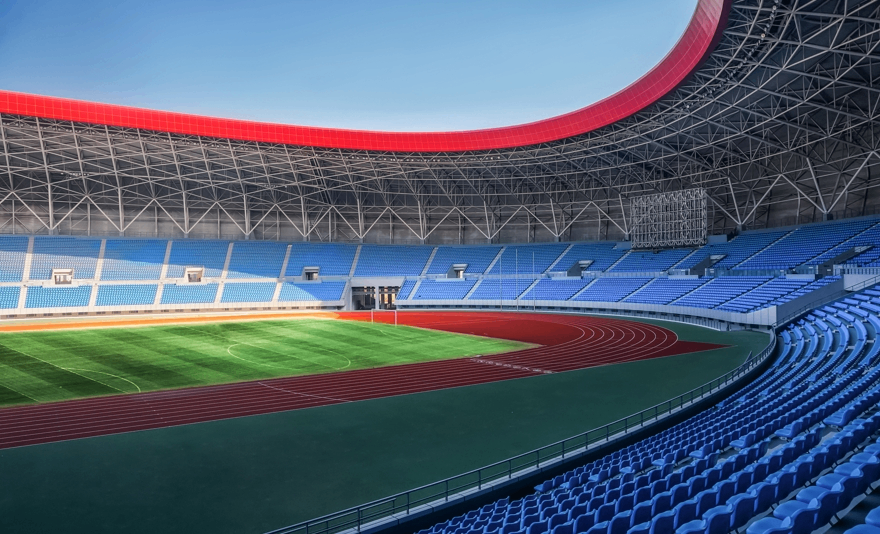In the field of modern architecture, large-scale buildings such as gymnasiums have extremely high requirements for building materials due to their unique functional needs and large scale. From meeting the structural requirements of large spaces and long spans, ensuring safety in densely populated areas, to achieving energy conservation, environmental protection, beauty, and comfort, various high-performance building materials play a crucial role.
Image Source:699pic
Large gymnasiums have spacious spaces, and building materials need to have the characteristics of being lightweight and high-strength. For example, carbon fiber materials, with their excellent specific strength and specific modulus, can reduce the structural self-weight and significantly enhance the bearing capacity and stability of the building. They are widely used in important structural parts of gymnasiums such as the roof and grandstands. For instance, in a well-known gymnasium, carbon fiber composite materials are used to reinforce the roof structure, effectively addressing the challenges posed by large spans and enhancing the seismic performance of the building.They are often used in the building's enclosure structure and interior decoration, such as making daylighting roofs and wall decorative panels, which not only ensure the beauty of the building but also meet the functional requirements of thermal insulation, waterproofing, and moisture prevention.
Safety is always a top priority in densely populated places like gymnasiums. In terms of fire prevention, non-combustible or flame-retardant materials are preferred. For example, fireproof gypsum board, with gypsum as its main component, has good fire resistance. When exposed to fire, it can release crystalline water, absorb heat, and inhibit the spread of fire. It is commonly used for the ceiling and partition walls of gymnasiums. High-performance concrete also plays a key role in large-scale buildings. It has high strength and good durability, effectively withstanding natural disasters such as earthquakes and wind disasters and providing a solid guarantee for the structural safety of the building. In the construction of gymnasiums in earthquake-prone areas, the use of high-performance concrete has greatly improved the seismic fortification ability of the building.
For the acoustic environment of gymnasiums, the application of sound-absorbing materials is essential. Sound-absorbing panels are a typical example. Through their microporous structure on the surface, they can convert sound into heat energy and effectively reduce the echo and reverberation indoors, creating a clear and comfortable acoustic environment for athletes and spectators. Installing sound-absorbing panels on the walls and ceilings of gymnasiums can significantly improve the sound effect, greatly enhancing both the transmission of instructions for athletes and the viewing experience of spectators.
As energy conservation and environmental protection have become a global consensus, gymnasium buildings are also actively responding. The application of solar panels is becoming more and more widespread. They can convert solar energy into electrical energy to power the lighting, ventilation, and other equipment in the venue, effectively reducing the dependence on traditional energy sources. In some large gymnasiums, solar panels are laid over a large area on the roof, not only meeting part of the venue's electricity demand but also storing excess electrical energy or feeding it into the grid, achieving sustainable energy utilization.
Beauty and individuality are also the goals pursued by gymnasium buildings. Metal curtain walls, with their unique luster, rich colors, and diverse shapes, add a modern and technological touch to gymnasiums. Aluminum-magnesium-manganese alloy curtain walls are a common choice. They are lightweight, corrosion-resistant, and can be processed into various shapes and surface effects, perfectly integrating with the surrounding environment and showcasing a unique architectural style.
From intelligent materials to degradable materials, every innovation in building materials will drive the construction industry to move forward in the direction of greater safety, environmental protection, comfort, and beauty, bringing a better sports activity and viewing experience for people.

